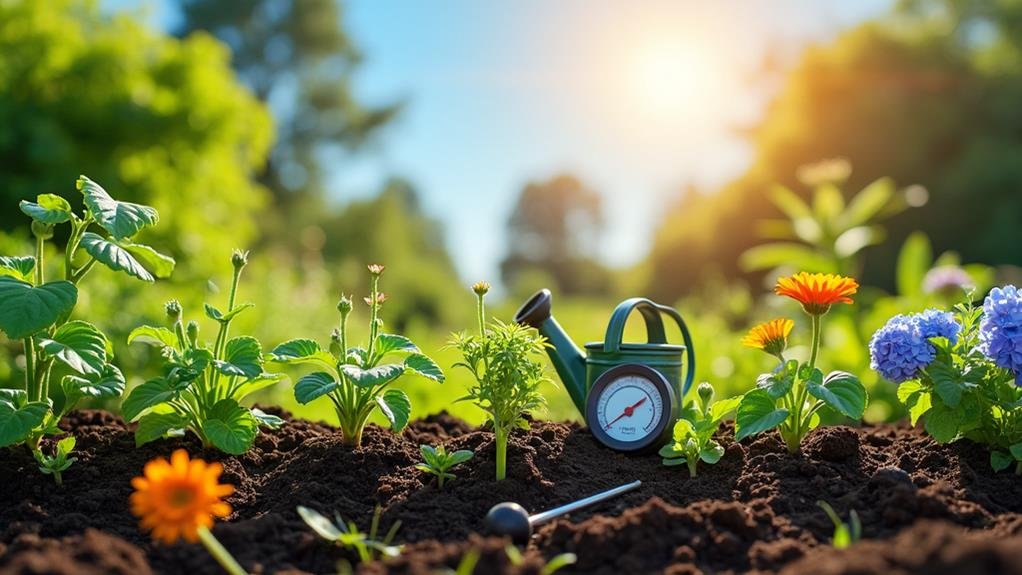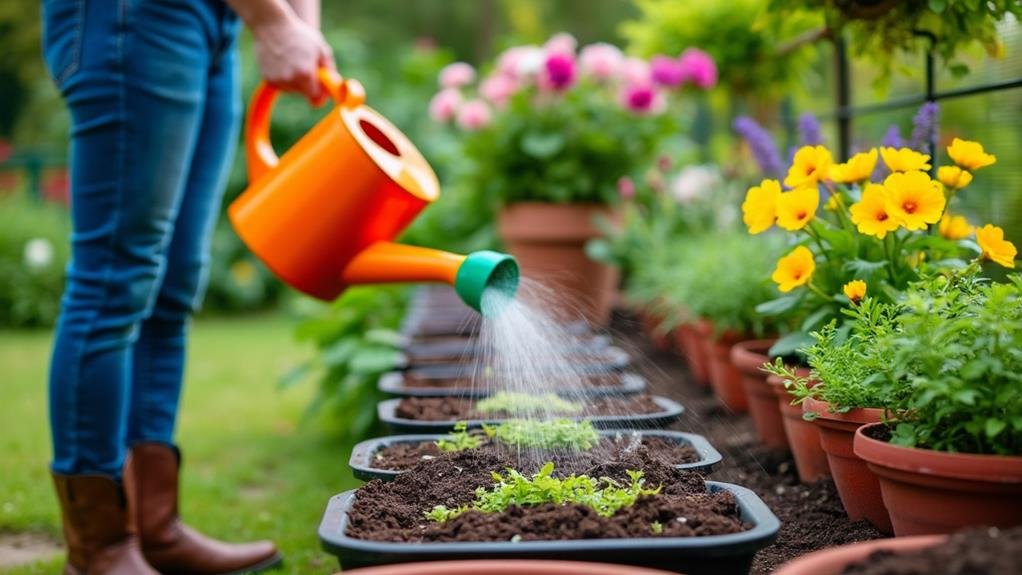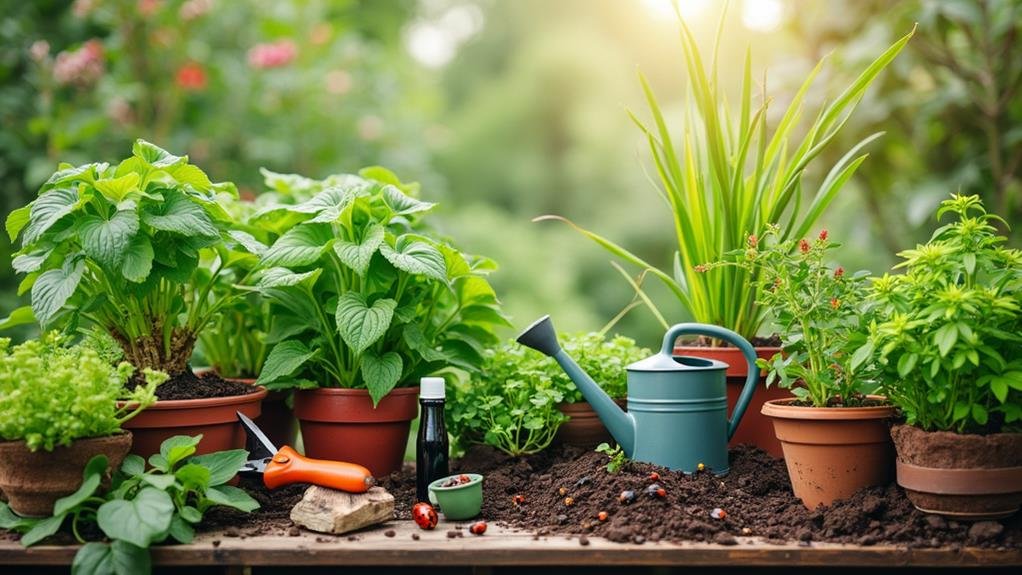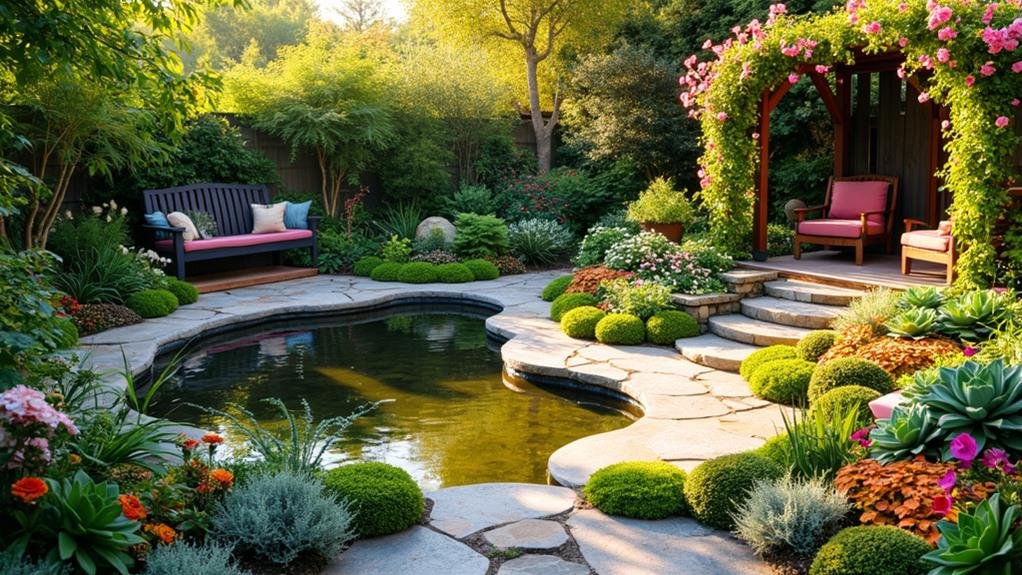To succeed in gardening, focus on three key areas: soil, sunlight, and water. Start with quality soil that’s rich in nutrients and well-drained. Test the pH and improve it with organic matter like compost. Make sure your plants receive 6 to 8 hours of sunlight daily, selecting sunny spots in your garden. Water deeply to encourage strong roots, aiming for about an inch of water each week. Remember to check for pests and maintain healthy plants through regular care. With these tips, your garden can thrive beautifully, and there’s plenty more you can uncover to enrich your gardening journey.
Essential Gardening Knowledge
To cultivate a thriving garden, it’s essential to grasp the fundamentals of soil quality, sunlight, and maintenance. Understanding soil composition is key to your plants’ success. Nutrient-rich and well-drained soil directly impacts plant health and the yield you’ll get.
To create the best soil, consider testing its pH and enriching it with organic matter, like compost. This helps provide the necessary nutrients for your plants.
Sunlight is another critical factor; most vegetables need 6 to 8 hours of direct sunlight daily. Choosing a sunny spot in your yard will boost your plants’ growth.
Also, learn about the planting times for different crops, like cool-season versus warm-season plants, to guarantee they germinate and thrive.
Regular maintenance is essential too. Water your plants adequately, as they need consistent moisture to grow well.
Additionally, keep an eye out for pests and manage them promptly to protect your garden.
Optimizing Plant Growth Conditions

How can you create the ideal conditions for your plants to thrive? Start by considering their sunlight needs. Most vegetables require 6 to 8 hours of direct sunlight daily, so using effective Sunlight Strategies is key.
Observe your garden throughout the day to identify the sunniest spots, ensuring your plants receive the light they need for growth.
Next, focus on your soil. Well-drained, nutrient-rich soil is essential. Incorporate organic matter like compost to improve fertility and moisture retention. This step can make a big difference in your plants’ health.
Temperature and moisture are also important. Understand the specific needs of your plants, selecting the right planting times for cool-season and warm-season crops.
Proper spacing is significant too; it prevents overcrowding, allowing air to circulate and nutrients to reach your plants.
Lastly, keep in mind that regular watering is critical. Consistent moisture helps prevent root rot and supports ideal growth rates, especially for root vegetables and leafy greens.
Effective Watering and Fertilization

Effective watering and fertilization are essential for maintaining a healthy garden. You’ll want to make sure your plants receive about 1 inch of water each week, either from rainfall or your watering techniques.
Deep watering is key; it helps roots grow deeper into the soil, making your plants more resilient against drought. Instead of frequent shallow watering, aim for a thorough soak that encourages strong root development.
When it comes to fertilization, start by testing your soil to find out what nutrients it may lack. Organic options like compost or balanced fertilizers work wonders for promoting healthy growth.
During the growing season, fertilize every 4-6 weeks when your plants are actively absorbing nutrients.
Timing matters, too—water your plants in the early morning to reduce evaporation and lower the risk of fungal diseases. This allows the plants to soak up moisture effectively before the heat of the day kicks in.
By mastering these watering techniques and fertilization strategies, you’ll set your garden up for success, guaranteeing that your plants thrive and produce beautifully throughout the season.
Happy gardening!
Pest Control and Plant Maintenance

Pest control and plant maintenance go hand in hand, and staying proactive can make all the difference in your garden’s health. One effective method is practicing companion planting, like pairing marigolds with your vegetables. These flowers act as natural deterrents, attracting beneficial insects that help keep pests away.
Regularly inspecting your plants for any signs of pests or diseases is vital; catching issues early can prevent significant damage. Utilizing organic pest control methods, such as neem oil or insecticidal soaps, helps manage pest populations without harming helpful organisms or the environment.
Additionally, maintaining healthy soil through consistent watering, mulching, and adding organic matter strengthens your plants, making them more resilient to infestations. Establishing a regular maintenance routine is fundamental.
Weeding, pruning, and monitoring plant growth create an ideal growing environment and reduce stress on your plants. A healthy garden not only looks good but also stands a better chance against pests.
Designing Your Ideal Garden

Creating a thriving garden goes beyond just managing pests and maintaining plants; it involves thoughtful design that meets your gardening goals. Start by considering the sunlight exposure in your chosen location, as most vegetables need 6 to 8 hours of direct sunlight daily to thrive.
When planning your garden, choose an appropriate size—aim for a 10 x 10 feet area for in-ground gardens, or 4 x 4 to 4 x 8 feet for raised beds.
Next, make sure your soil is well-drained and nutrient-rich. Mixing in organic matter will promote healthy plant growth and help you avoid poorly draining areas.
Think about garden aesthetics, too; arrange plants by height and color to create a visually appealing layout. Use companion planting techniques to improve yields and minimize pests, keeping in mind the spacing required for each plant.
Lastly, utilize resources like the Old Farmers Almanac’s online garden planning tool to design your layout. This tool helps you track planting and harvesting dates, making your gardening experience more organized and enjoyable.
With careful planning, you’ll create a garden that not only meets your needs but also brings beauty to your outdoor space.
Conclusion
Gardening can be a rewarding adventure, filled with learning and creativity. By understanding essential gardening knowledge, optimizing growth conditions, and maintaining your plants, you’ll create a beautiful space that reflects your personality. Remember, every gardener faces challenges, but with patience and the right techniques, you can turn those challenges into successes. So, grab your tools, get your hands dirty, and watch your garden thrive. Enjoy the journey, and let your green thumb flourish!




